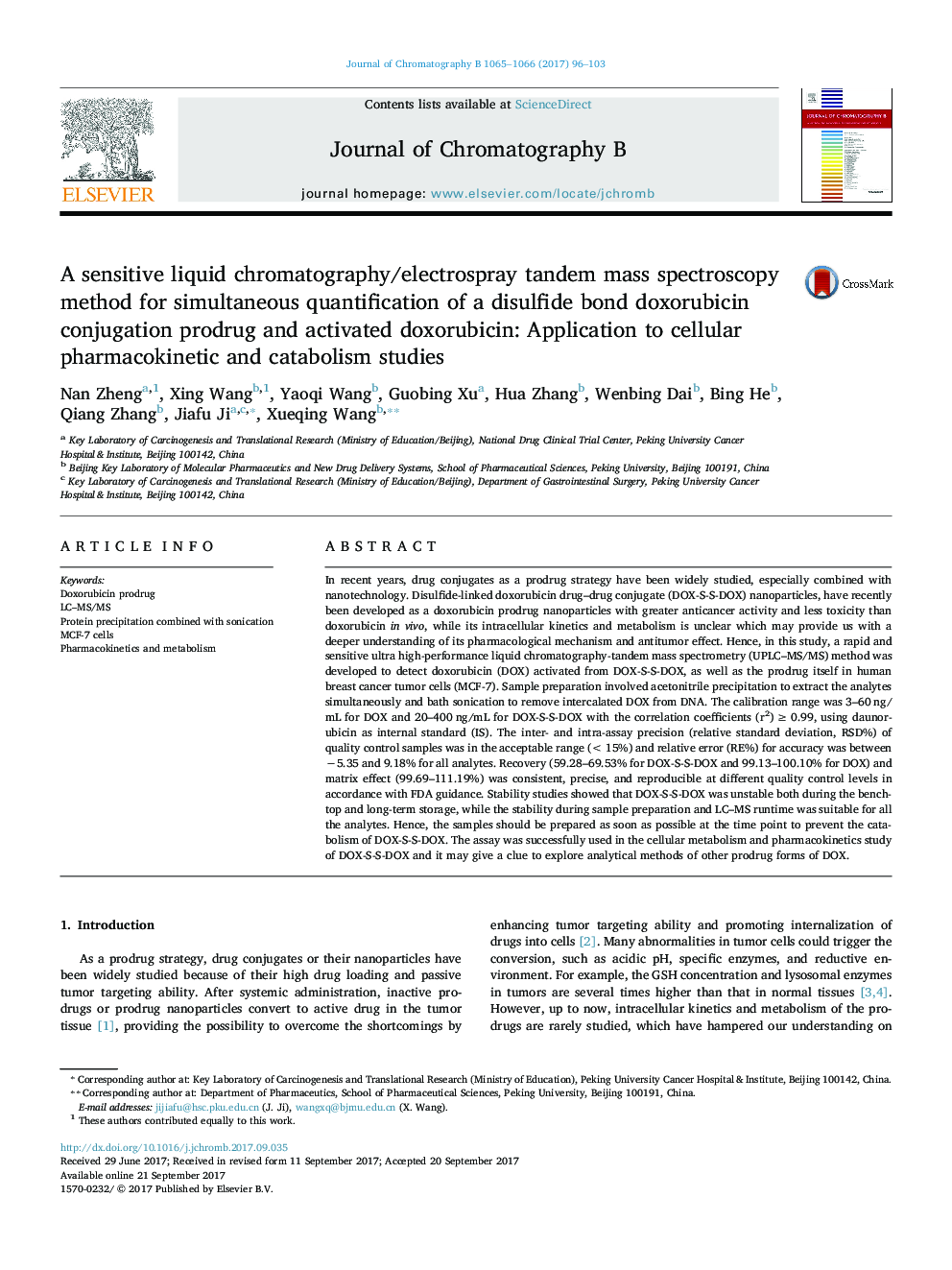| کد مقاله | کد نشریه | سال انتشار | مقاله انگلیسی | نسخه تمام متن |
|---|---|---|---|---|
| 5136092 | 1493999 | 2017 | 8 صفحه PDF | دانلود رایگان |

- An UPLC-MS/MS method is developed for simultaneous determination disulfide-linked doxorubicin prodrug and activated doxorubicin in cancer cells.
- The method provides efficient sample preparation with acetonitrile precipitation and remove of intercalated doxorubicin through bath sonication.
- The method is suitable for the in vitro study of doxorubicin prodrug nanoparticles.
In recent years, drug conjugates as a prodrug strategy have been widely studied, especially combined with nanotechnology. Disulfide-linked doxorubicin drug-drug conjugate (DOX-S-S-DOX) nanoparticles, have recently been developed as a doxorubicin prodrug nanoparticles with greater anticancer activity and less toxicity than doxorubicin in vivo, while its intracellular kinetics and metabolism is unclear which may provide us with a deeper understanding of its pharmacological mechanism and antitumor effect. Hence, in this study, a rapid and sensitive ultra high-performance liquid chromatography-tandem mass spectrometry (UPLC-MS/MS) method was developed to detect doxorubicin (DOX) activated from DOX-S-S-DOX, as well as the prodrug itself in human breast cancer tumor cells (MCF-7). Sample preparation involved acetonitrile precipitation to extract the analytes simultaneously and bath sonication to remove intercalated DOX from DNA. The calibration range was 3-60 ng/mL for DOX and 20-400 ng/mL for DOX-S-S-DOX with the correlation coefficients (r2) â¥Â 0.99, using daunorubicin as internal standard (IS). The inter- and intra-assay precision (relative standard deviation, RSD%) of quality control samples was in the acceptable range (<15%) and relative error (RE%) for accuracy was between â5.35 and 9.18% for all analytes. Recovery (59.28-69.53% for DOX-S-S-DOX and 99.13-100.10% for DOX) and matrix effect (99.69-111.19%) was consistent, precise, and reproducible at different quality control levels in accordance with FDA guidance. Stability studies showed that DOX-S-S-DOX was unstable both during the bench-top and long-term storage, while the stability during sample preparation and LC-MS runtime was suitable for all the analytes. Hence, the samples should be prepared as soon as possible at the time point to prevent the catabolism of DOX-S-S-DOX. The assay was successfully used in the cellular metabolism and pharmacokinetics study of DOX-S-S-DOX and it may give a clue to explore analytical methods of other prodrug forms of DOX.
164
Journal: Journal of Chromatography B - Volumes 1065â1066, 15 October 2017, Pages 96-103